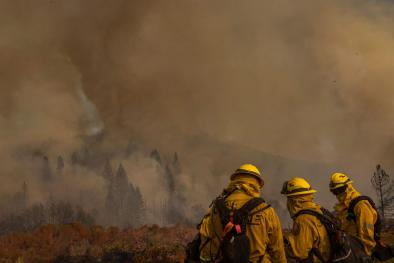Science Source
The more extreme nature of U.S. warm season climate in the recent observational record and two “well-performing” dynamically downscaled CMIP3 models
- Aims to answer the following questions: (1) How is the mean character of warm season precipitation in the U.S. changing? and (2) Does natural climate variability synergistically interact with anthropogenic climate change to intensify extremes?
- States that during the warm season, observations and Intergovernmental Panel on Climate Change global climate models generally support a “wet gets wetter, dry gets drier” hypothesis in arid and semiarid regions located in subtropical zones
- Considers changes in U.S. early warm season precipitation in the observational record and regional climate model simulations
- Finds that, for the observational period (1950–2010), it is fair to say that anthropogenic global warming has already had a profound impact on the U.S. warm season climate over the past 30 years (1981–2010)
- Finds that temperatures increases are largest strongly in the western U.S., with a “warming hole” in the central U.S. that is likely related to enhanced precipitation and evapotranspiration
- Finds that both observations and model results show amplification in historical seasonal transitions of temperature and precipitation associated with North American Monsoon System (NAMS) development
- Finds that similar extreme trends are also projected by Weather Research and Forecasting (WRF)-MPI for the next 30 years (assuming the influence of remote Pacific sea surface temperature (SST) forcing associated with the El Niño–Southern Oscillation and Pacific Decadal Variability (ENSO-PDV) on U.S. regional climate remains the same in the 21st century)
- Develops a methodology to objectively analyze how climate change may be synergistically interacting with ENSO-PDV variability during the early warm season
- Analysis suggests that interannual variability of warm season temperature and precipitation associated with Pacific SST forcing is becoming more extreme, and the signal is stronger in the observed record
Related Content
Headline

Feb 7, 2024 | Climate Nexus Hot News
Heat And Smoke Are Worse Together Than Apart
Science Source
| Science Advances
Unprecedented climate events: Historical changes, aspirational targets, and national commitments
Noah S. Diffenbaugh, Deepti Singh, and Justin S. Mankin
Science Source
| American Meteorological Society
Sixfold Increase in Historical Northern Hemisphere Concurrent Large Heatwaves Driven by Warming and Changing Atmospheric Circulations
Cassandra D. W. Rogers , Kai Kornhuber , Sarah E. Perkins-Kirkpatrick et al
Science Source
| American Meteorological Society
Diverse Characteristics of U.S. Summer Heat Waves
Bradfield Lyon and Anthony G. Barnston


